From Slavery to The Pillaging Of African Resources.
After a years absence I stood once more at Tagrin opposite the river S.Leone facing the coastal mountainous peninsula and the teaming traffic congested city of Freetown.
The short river journey to the village of Pepel was a pleasant and uncomplicated 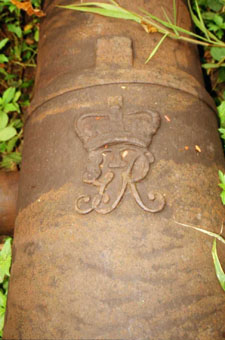 affair and the timeless sight of the ancient slave trading island of Bunce appeared as a memorable witness to mans inhumanity, a clear legacy of avarice, greed and a litany of one of the worst forms of treachery and just one of over forty slave forts found along the west coast of Africa symbolising the largest ever forced migration in the ongoing story of human development.
affair and the timeless sight of the ancient slave trading island of Bunce appeared as a memorable witness to mans inhumanity, a clear legacy of avarice, greed and a litany of one of the worst forms of treachery and just one of over forty slave forts found along the west coast of Africa symbolising the largest ever forced migration in the ongoing story of human development.
“We’re back and anything that takes place here will have to go through me first”, said the APC councilor. There have been major changes across S.Leone since the nations elections in which the APC party had won a decisive victory over the former government of the SLPP and Pepel iron ore loading jetty was once more about to resume the export of iron ore from the distant interior mines of Marampa. After a brief visit to Bunce island I was to return to the chaotic traffic of Freetown and eventually onto the diamond mining fields of Kono and in particular to the war ravished town of Koidu.
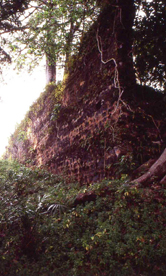
The return ferry boat from Pepel docked at government wharf where most of the passengers from Pepel and Targrin disembarked and after off loading both people the and cargo the boat continued around the shore line where I was able to witness the shocking state of how the truly underprivileged citizens of Freetown are forced by circumstances to live.
The ransacked nature of this capital city was only to evident but the impact of seeing Big Wharf was a shock to the system for here the inhabitants live without running water and no latrines and most if not all the structures are made of recycled rubbish.
Closer to the shoreline the houses are built on a bed of discarded rubbish jutting out into the bay and these homes consisted of broken cans, plastic sheets and other discarded items.
One of the impacts of the civil war was a surge of civilians from up country entering Freetown due to instability and rebel activity, Freetownʼs population has since tripled and the general impact on the environment has been catastrophic with water supplies running constantly short and devastating consequences for the remaining forestry reserves on the mountainous peninsula. Ninety percent of the cityʼs population still rely on wood as a source of energy for cooking, the war in Liberia was largely sustained by wholesale deforestation of the country timber reserves and in turn S.Leone was targeted firstly for her alluvial diamonds and then even timber found within the Gola forest.
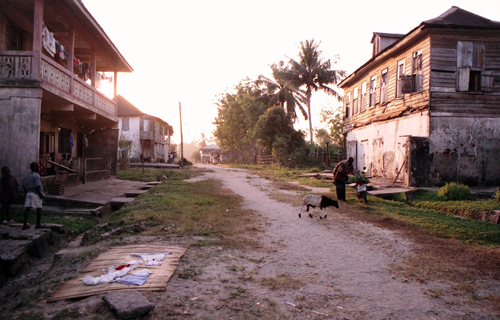
The general impact of the last five hundred years in terms of the extraction of valuable resources from this part of Africa has delivered few tangible benefits to the people of this desperately poor nation.
In the long term the entire planet and mankindʼs future is at a perilous crossroad with the issue of global warming and the demise of the planets fragile ecosystem and limited resources.
Two dayʼs after our arrival in Freetown the newly elected APC president celebrated his inauguration in the national stadium and a large entourage of regional heads of states attended the grand event. Surprisingly the president of Bakina Faso also flew in for the celebration as Freetown came to a standstill to mark this historic dawn of Earnest Bai Koroma installment but during S.Leoneʼs long conflict Blaise Campore, Bakina Fasso head of state had supplied combatants and arms to assist the RUF who were infiltrating S.Leone from Liberian territory. Blaise Campore had been a close confident and regional ally of the former Liberian President Charles Taylor and in exchange for Campore assistance diamonds from the mines of Kono were paid to the president of Bakina, infact Campore had also previously supplied fuel and weapons to UNITAS chief Jonas Savimbi of Angola ,again in exchange for diamonds.
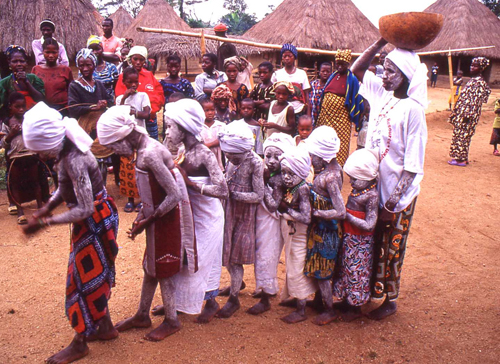 Bakina combatants had also been killed whilst in active combat against Ecomog troops at Fourah Bay college overlooking the city of Freetown during the brief illegal rule of the military Junta the AFRC, Bakina combatants had been identified by their national identity cards found on their bodyʼs. Charles Taylor has since been indicted for war crimes against humanity by the international court of justice and is presently in jail in the Hague awaiting trial whilst Campore has lately denied being a close confident and ally of Charles Taylor.
Bakina combatants had also been killed whilst in active combat against Ecomog troops at Fourah Bay college overlooking the city of Freetown during the brief illegal rule of the military Junta the AFRC, Bakina combatants had been identified by their national identity cards found on their bodyʼs. Charles Taylor has since been indicted for war crimes against humanity by the international court of justice and is presently in jail in the Hague awaiting trial whilst Campore has lately denied being a close confident and ally of Charles Taylor.
And so it came as a surprise to see Campore remarkable turn around and his unashamed attendance at the installment of S.Leoneʼs new civilian peacetime president, Earnest Bai Koroma.
The once rich diamond gravel pits of Kono are now largely exhausted and the remaining panniers are forced to search through alluvial abandoned dumps in an attempt to find undetected precious stones, a thankless task for the unfortunate and impoverished miners toiling in the ferocious heat of the equatorial African sun.
A former mercenary organization from S.Africa founded by a colonel Tim Spicer and a Simon Mann has since transformed into the present mining company of Koidu Holdings and is now exploiting the last remaining diamond reserves that are found in a rock formation know as Kimberlite.
Koidu Holdings are fiercely resented by the local population and serious confrontations have recently taken place during demonstrations within the town.
After two nights in the town of Koidu I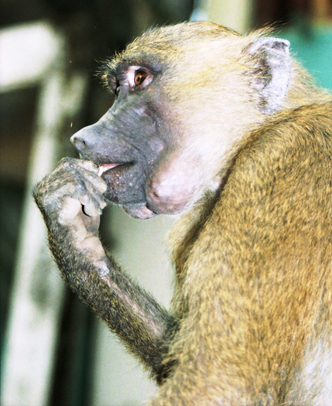 began a journey to the Tingi mountains in the company of a local cameraman by the name of Abdulai Jallow. The rains of 2007 had been one of the wettest across the continent and my fear was that we would encounter torrential rainfall as we ascended up to the Tingi mountains highest peak Sankanbiriwa {1850 meters} and as we traveled in the direction of Jagbwema foreboding dark rain clouds ominously began to form but by midday the skyʼs began to clear and by now we had abandoned local motor bike taxi transport and were happily trekking towards the village of Kenewa which lay at the foot of one of the most mysterious and unknown mountain peaks in W.Africa known as Tingi. Although Sankanbiriwa is the highest peak within this range it is probable that the mountain table top of Tingi hold an unknown secret for this region although still mostly uncharted is an area of great seismic activity and according to local villages in the year 1996 a major seismic event occurred during which villages were flooded by water and sand which reflected a multitude of different colours….
began a journey to the Tingi mountains in the company of a local cameraman by the name of Abdulai Jallow. The rains of 2007 had been one of the wettest across the continent and my fear was that we would encounter torrential rainfall as we ascended up to the Tingi mountains highest peak Sankanbiriwa {1850 meters} and as we traveled in the direction of Jagbwema foreboding dark rain clouds ominously began to form but by midday the skyʼs began to clear and by now we had abandoned local motor bike taxi transport and were happily trekking towards the village of Kenewa which lay at the foot of one of the most mysterious and unknown mountain peaks in W.Africa known as Tingi. Although Sankanbiriwa is the highest peak within this range it is probable that the mountain table top of Tingi hold an unknown secret for this region although still mostly uncharted is an area of great seismic activity and according to local villages in the year 1996 a major seismic event occurred during which villages were flooded by water and sand which reflected a multitude of different colours….
The full journal is included in the new book which will soon be for sale online and in select book stores.
